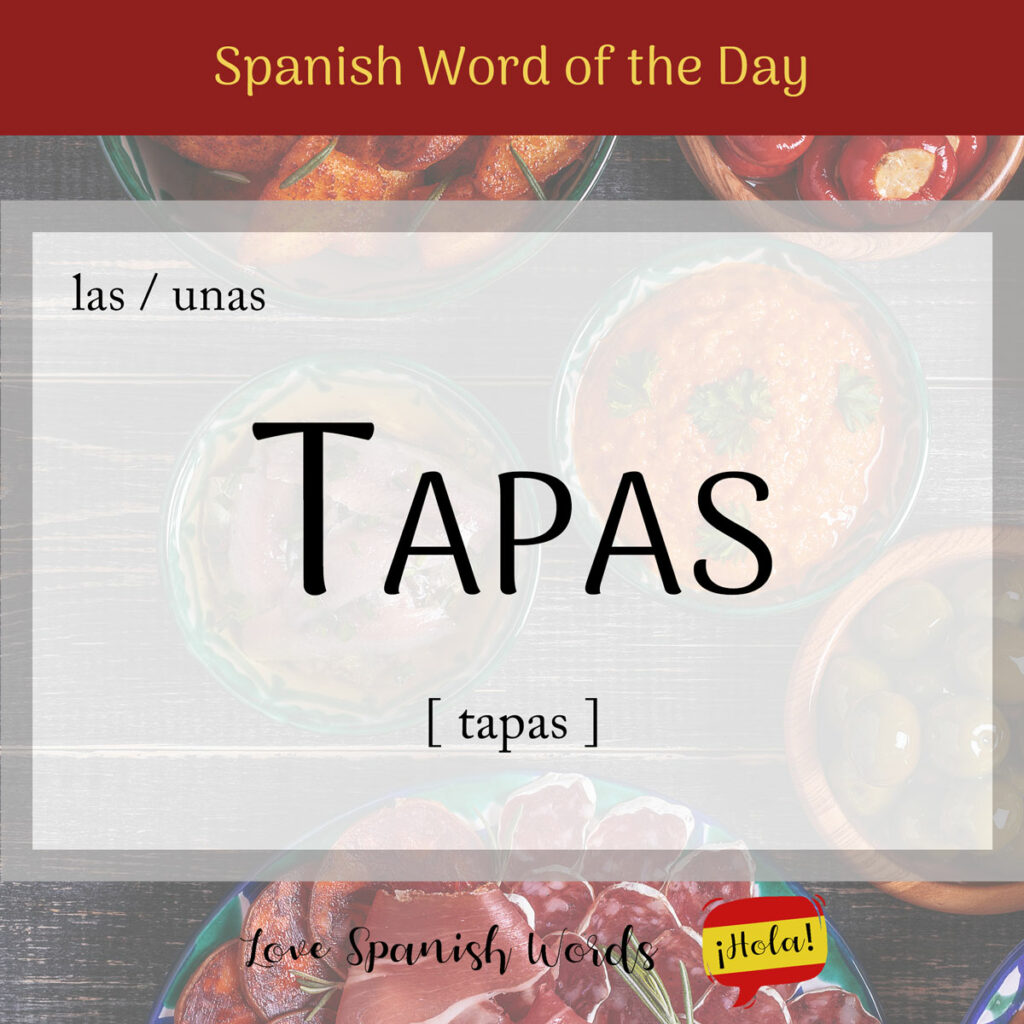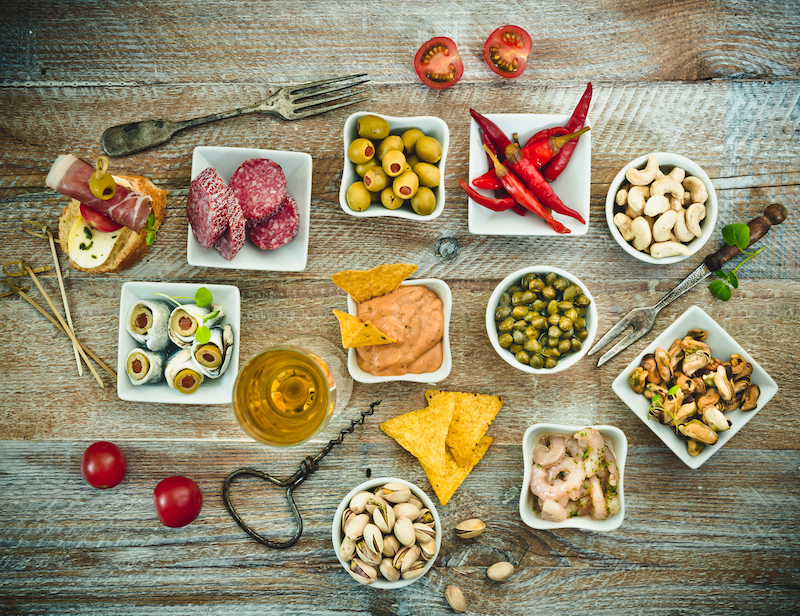When we think of Spanish food, tapas are likely the first thing that comes to mind, even for those who have never been to Spain. But what is the origin of this beloved tradition? Why are they called tapas, and what kind of dishes can we expect when we go out for tapas? Let’s explore the answers to these questions.
Latin American Pronunciation
European Pronunciation

Tapas is the plural of the feminine noun tapa, meaning lid. It takes the following definite and indefinite articles:
- la tapa = the lid
- las tapas = the lids
- una tapa = a lid
- unas tapas = some lids
The above explanation touches on the literal sense of the word tapa or lid, which originates from the Gothic *𐍄𐌰𐍀𐍀𐌰 (*tappa) and the Proto-Germanic *tappô (plug or tap). However, let’s first delve into the culinary use of the word tapas:
Tapas are small portions of food served in bars and restaurants in Spain, typically to accompany a drink of beer (cerveza) or wine (vino). These delightful bites can be enjoyed at any time of the day, often serving as appetizers in the early evening before the main evening meal (la cena).
The size and quality of tapas vary widely from bar to bar and town to town. They can be as simple as a few olives (aceitunas) with a slice of bread (pan) or something more elaborate.
Originally, these small portions were provided free of charge (gratis) alongside your beer or wine. In some parts of Spain, this tradition still holds. For example, certain bars in Madrid continue to honor this custom. In Andalucía, especially in the eastern part of the region, you can still expect free tapas, while in the western parts, you may have to pay for them. Granada, in eastern Andalucía, is renowned for its free tapas and is one of the best places in Spain to try these little delicacies.
Me encanta ir de tapas con mis amigos.
I love going for tapas with my friends.
Tapas are an integral part of the Spanish lifestyle, where the social aspect is paramount. The tradition of going out for tapas is known as tapeo, derived from the colloquial verb tapear, meaning to dine out on tapas.

As we all know, the tradition of tapas crossed the ocean to Central America, where similar small bar snacks are known as bocas. In Mexico, there are vegetarian varieties called botanas, in Argentina, they serve cold meats, cheeses, and olives known as picadas, and in Brazil, you may enjoy tiragostos with your beer.
The origins of the name tapas are subject to debate, with a couple of common folk stories suggesting how the tradition began.
One tale attributes it to King Alfonso X, El Sabio (The Wise One), who was said to have been prescribed an alcohol-based remedy when unwell. To mitigate the effects of alcohol, he started consuming small portions of food with each dose. Legend has it that he later decreed that Castilian taverns serving wine must always accompany it with a small portion of food to prevent public drunkenness.
Another version involves King Alfonso XIII, who allegedly stopped at an inn during a journey in the province of Cádiz and ordered a glass of sherry (jerez). To protect his drink from the wind, the innkeeper covered it with a slice of ham. The king enjoyed this and asked for another drink with a tapa (cover) just like the first.
Nevertheless, it is likely that the practice originated from covering a drink, either with a piece of bread or ham, to prevent dust or flies from getting in before it was consumed.

It’s impossible to list all the different tapas dishes available, given their variety. However, here’s a selection of some of the most common and typical tapas dishes you can expect to find. Remember, these are served in very small portions, especially in bars where they are often complimentary (gratis).
- Aceitunas = olives, sometimes filled with anchovies (anchoa), garlic (ajo) or red peppers (pimiento rojo).
- Albóndigas = meatballs (usually pork (cerdo)) served in tomato based sauce.
- Croquetas = deep-fried roll with a béchamel and potato centre mixed with ham (jamón) or meat (carne) and cheese (queso) and a crispy breaded outer layer.
- Caracoles = typically cooked in a broth with cumin (comino), black pepper (pimiento negra), garlic (ajo), and bay leaves (laurel).
- Empanadillas = small savoury pastries filled with vegetables and meat (commonly tuna (atún) and tomato (tomate).
- Morcilla = air cured sausage made with pigs blood, similar to black pudding.
- Chorizo = air cured pork sausage made with smoked paprika (pimentón ahumado) and garlic (ajo).
- Ensaladilla rusa = literally a Russian salad – a potato salad with mayonnaise (mayonesa), tuna and vegetables (verduras).
Esta es la mejor tapa de chorizo de Andalucía.
This is the best chorizo tapas in Andalucía.
Finally, we need to address the original meanings of the word tapa.
As mentioned earlier, among other things, tapa means lid (of a container), top (of a container), plug, cap (fuel cap), or cover (e.g. manhole cover).
It also refers to the cover of a hardback book (libro de tapa dura) and may also refer to a cut of meat from the flank of a cow (pieza de carne).
Tapa is also the 2nd person singular present indicative of the verb tapar, meaning to cover with a lid or to block up a hole (for example, to fill a tooth = tapar una muela).
The verb tapar can also mean to block a view, light, exit or entrance. And taparse is a reflexive verb meaning to wrap up (e.g. tápate bien que hace frío = wrap up warm, it’s cold).

